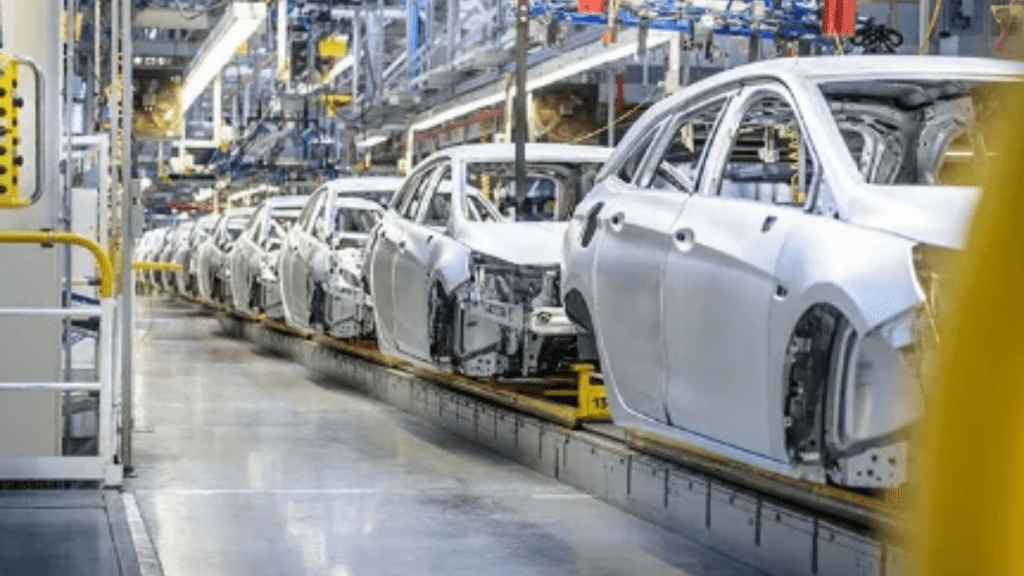With the Donald Trump-led US administration pressing India to remove tariffs on imported cars, Nomura said that ‘there would be no sizeable impact’. While India is ready to make further deductions, a full elimination of duties is not currently on the cards. A Reuters report said that the Indian government is cautious about an immediate reduction to zero. The two countries will discuss India’s high auto tariffs during its formal talks for a bilateral trade deal, paving the way for Tesla’s much talked about India launch.
India on a strong wicket: Will the tariff movement have a major impact?
In the case of auto components, India is very cost competitive, Nomura stated. “The average hourly wage in India is $1.5 vs ~$2.5 in Mexico and $15 in the US. For shop floor workers, the wages in the US are ~5x vs that in India. Indian suppliers have been able to build a reasonable scale with leadership in certain products such as EV differentials, bevel gears and crankshafts,” the analysis report by the brokerage firm elaborated. While the Indian share has been rising but is still low at approximately 2 per cent due to the integrated supply chains of global OEMs.
Considering this, even in a scenario where India decided to lower import duties on auto components to zero, there would be no sizeable impact, since, as Nomura explained, the duty differentials are not large and the risk of imports is low. “Higher tariffs by the US on countries such as Mexico, Canada and China may, in fact, benefit Indian exporters in gaining further share,” it said.
Now in case of India deciding to lower import duties, there will be a slight increase in competitive intensity in the PV and premium motorcycles industries at the higher end, Nomura said. But interestingly, and to India’s advantage, the average car price in the US is 447k (Rs 4.1 million), which is significantly higher than the ASP in India of $11K (Rs 949k) in FY25. Many foreign players such as GM and Ford have already exited the Indian market due to a lack of relevant models thereafter making losses for many years. “Thus, in our view, one strategy the Indian government could adopt is to offer a substantially lower duty for cars made in the US, as long as they are not taking advantage of the system by importing cars or components from other lower-cost-production countries such as Mexico or China. In other words, this benefit should apply for cars that have high value addition in the US (~90 per cent),” the Nomura report said.
A strong USD at play
Besides tariffs, another important factor to keep in mind is that USD has been appreciating, which has benefited US companies to source cheaper goods for the US consumer and yet make healthy margins. It is worth noting that over the past year, USD has appreciated by around 20 per cent vs the Mexican peso. “As long as the USD remains strong and keeps appreciating, manufacturing in the US will turn out to be more expensive,” it said.
A look at the current landscape
On both automobiles and auto parts, the US charges approximately 2.5 per cent tariff on imports from India, while India charges 110 per cent (70 per cent Basic custom duty + 40 per cent cess) on fully built cars and around 15 per cent tariffs on auto parts. Further, on two wheelers, the US charges 2.4 per cent import duty, while India imposes a higher import duty of 70 per cent.
In terms of trade, Nomura informed, the trade for cars between India and the US is quite low. “The trade balance has been diminishing, and in fact the US had a trade surplus of $25 million in 2023. Note that Mexico, Japan and Canada are the largest exporters to the US,” it said. For motorcycles, it added, there was a trade deficit for the US ($58 million) in 2023.
Now for parts and accessories of motor vehicles, US imports from India were around $2 billion but exports to India were $400 million in 2023. This amounted to approximately 2 per cent of total US auto parts imports, significantly behind Mexico, Canada, China, Japan, Germany and Korea.
To conclude…
Nomura maintained that it does not expect any sizeable shift of auto production to the US for either OEMs or suppliers, as: 1) integrated production costs in the US (including the components) may not be viable due to higher costs and a lack of adequately trained local manpower; and 2) the term of the US president is four years, and it could take nearly two years before the plants come on stream. OEMs typically need a much longer horizon to set up plants.
In conclusion, it said, “We are not much concerned about India lowering tariffs. However, any sharp rise in tariffs across a variety of products would raise costs for the US consumer and impact inflation and consumer sentiment, in our view. This will be a key risk to watch for.”

